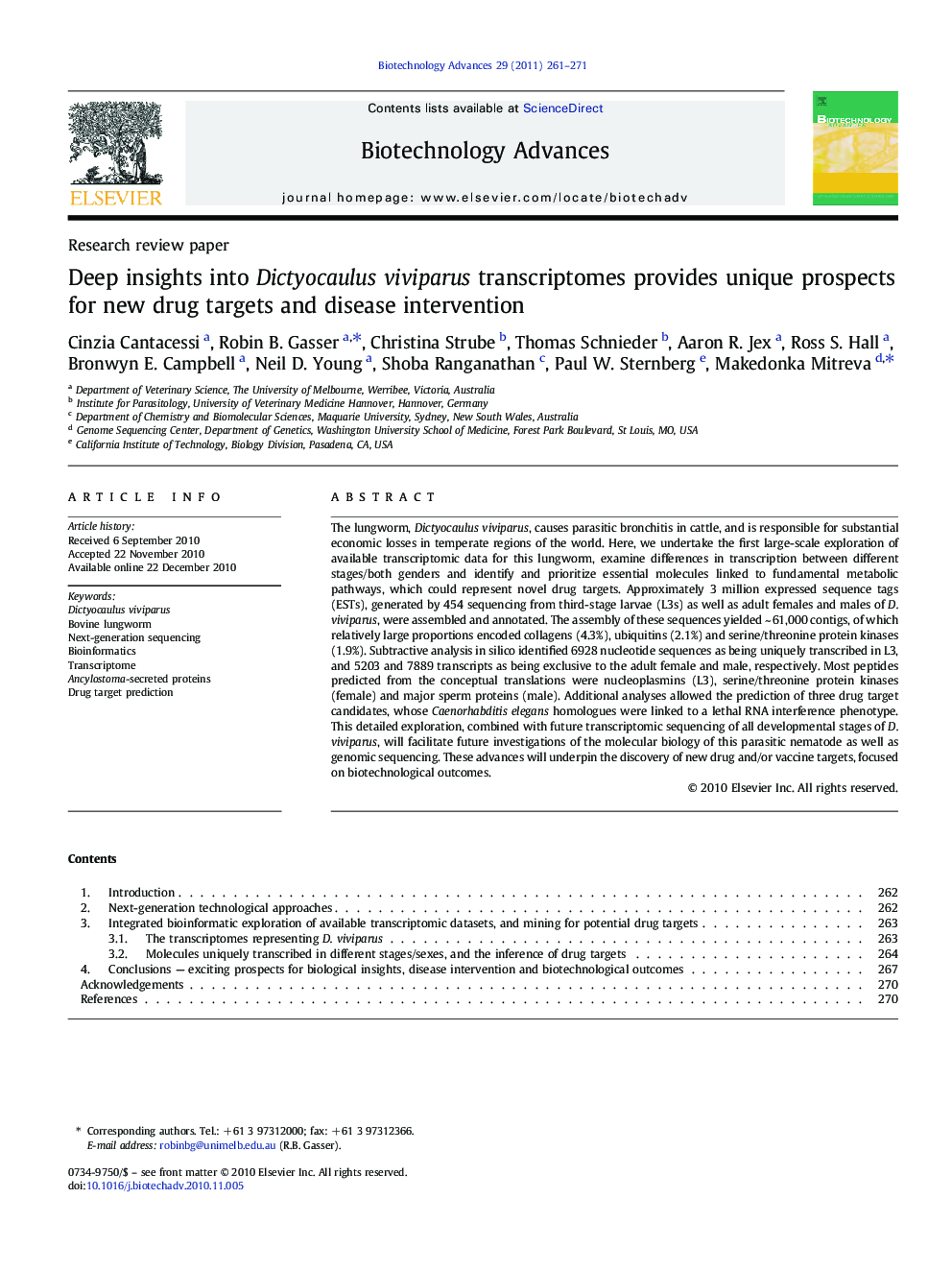| Article ID | Journal | Published Year | Pages | File Type |
|---|---|---|---|---|
| 14612 | Biotechnology Advances | 2011 | 11 Pages |
The lungworm, Dictyocaulus viviparus, causes parasitic bronchitis in cattle, and is responsible for substantial economic losses in temperate regions of the world. Here, we undertake the first large-scale exploration of available transcriptomic data for this lungworm, examine differences in transcription between different stages/both genders and identify and prioritize essential molecules linked to fundamental metabolic pathways, which could represent novel drug targets. Approximately 3 million expressed sequence tags (ESTs), generated by 454 sequencing from third-stage larvae (L3s) as well as adult females and males of D. viviparus, were assembled and annotated. The assembly of these sequences yielded ~ 61,000 contigs, of which relatively large proportions encoded collagens (4.3%), ubiquitins (2.1%) and serine/threonine protein kinases (1.9%). Subtractive analysis in silico identified 6928 nucleotide sequences as being uniquely transcribed in L3, and 5203 and 7889 transcripts as being exclusive to the adult female and male, respectively. Most peptides predicted from the conceptual translations were nucleoplasmins (L3), serine/threonine protein kinases (female) and major sperm proteins (male). Additional analyses allowed the prediction of three drug target candidates, whose Caenorhabditis elegans homologues were linked to a lethal RNA interference phenotype. This detailed exploration, combined with future transcriptomic sequencing of all developmental stages of D. viviparus, will facilitate future investigations of the molecular biology of this parasitic nematode as well as genomic sequencing. These advances will underpin the discovery of new drug and/or vaccine targets, focused on biotechnological outcomes.
